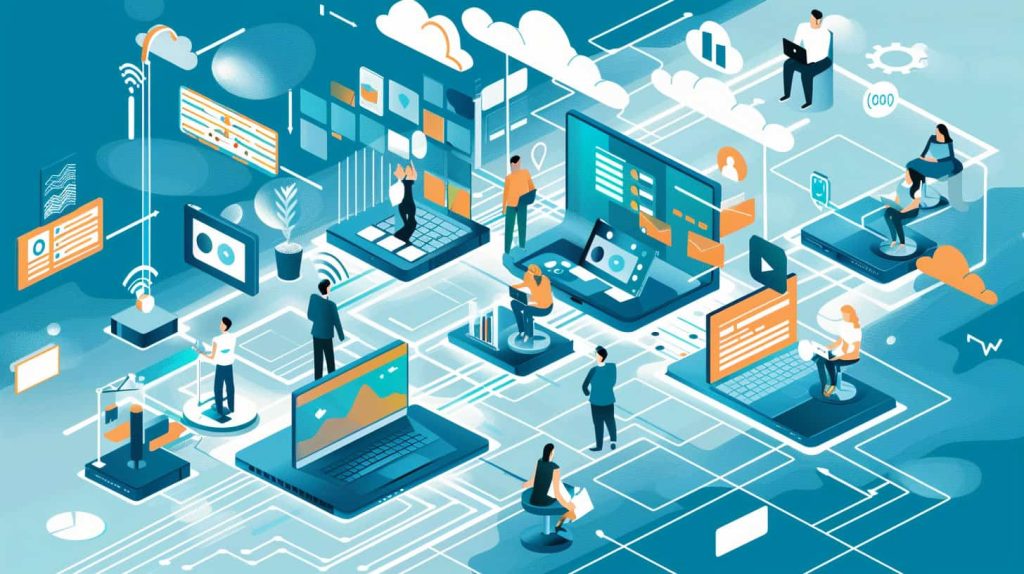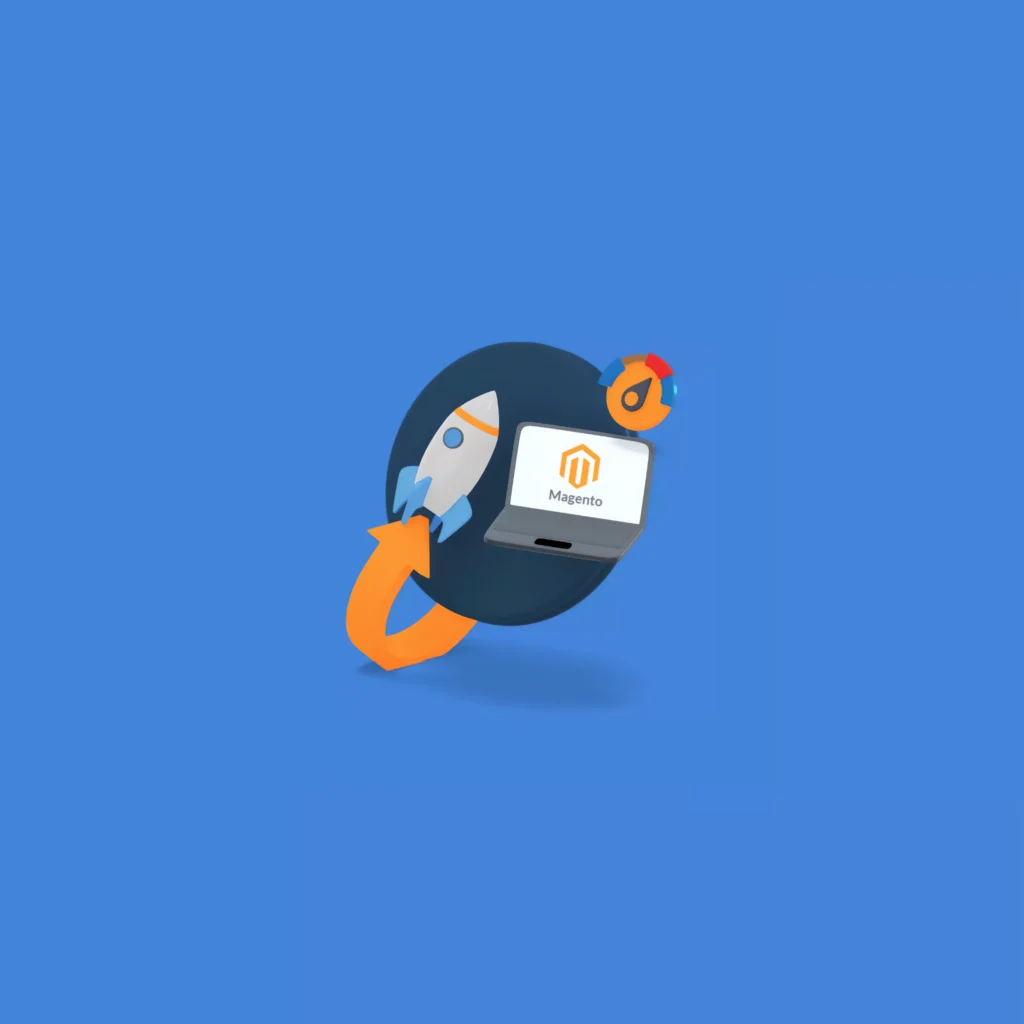Software Development: Best 10+ Trends, Tools, Best Practices

What Is Software Development?
Software development refers to the process of designing, programming, testing, and maintaining software applications. These applications can range from simple programs for personal use to complex systems for businesses and organizations. The goal of software development is to create solutions that meet specific user needs, automate processes, or solve particular problems, all while being functional, efficient, and user-friendly.
Best Practices for Effective Software Development
To succeed in software development, developers must adhere to best practices that ensure their code is clean, efficient, and maintainable. Here are some best practices to follow:
Write Clean, Modular Code: Keep your code organized and easy to understand. Follow coding conventions and standards to ensure consistency across your team.
Implement Version Control: Use version control tools like Git to track changes to your code, collaborate with team members, and revert to previous versions if needed.
Follow the DRY Principle: “Don’t Repeat Yourself.” Avoid redundancy in your code by reusing functions and components.
Conduct Code Reviews: Regular code reviews help identify issues early, improve code quality, and foster collaboration within development teams.
Automate Testing and Deployment: Use automated testing tools and continuous integration/continuous delivery (CI/CD) pipelines to streamline testing and deployment processes.
The Impact of Automation in Software Development
Automation has become one of the most transformative forces in modern software development. From testing and deployment to code generation and performance monitoring, automation is helping developers streamline workflows, reduce human error, and deliver software products more efficiently. As software development continues to scale in complexity and speed, automation tools and practices will only become more essential.
1. Continuous Integration and Continuous Delivery (CI/CD)
One of the most significant advancements in software development over the past decade has been the widespread adoption of CI/CD pipelines. CI/CD refers to the practices of continuously integrating code changes into a shared repository and automatically delivering them to production. This practice helps software teams:
- Reduce Manual Effort: Developers no longer need to manually integrate and deploy code updates. With automated pipelines, the process is faster and more reliable.
- Detect Bugs Early: Automated testing in CI/CD pipelines helps identify issues early, reducing the time and cost required to fix bugs. With regular testing after each code push, developers can address problems before they escalate.
- Improve Collaboration: CI/CD encourages collaboration by ensuring that all team members work with the latest codebase. Developers can easily review changes, and issues related to different versions of the software are minimized.
CI/CD tools like Jenkins, CircleCI, and GitLab CI have transformed how developers work by automating tasks that used to take hours, allowing teams to focus more on innovation and less on operational overhead.
2. Automated Testing
Automated testing is another area where software development has benefited from automation. In the past, testing was a slow and manual process, involving lengthy test scripts and checks. With modern testing frameworks, developers can create automated tests for unit tests, integration tests, and even user interface (UI) tests.
Automated testing enables developers to:
- Test Frequently: Because automated tests are faster and easier to execute, they can be run after every change to the codebase. This reduces the likelihood of defects going unnoticed and allows for rapid feedback.
- Ensure Consistency: Automated tests run in the same way every time, eliminating the inconsistencies that often occur with manual testing. This ensures more reliable results.
- Scale Efficiently: As the complexity of the software grows, so does the need for extensive testing. Automation allows developers to test large and intricate systems without the added overhead of manual testing.
Popular tools like Selenium, JUnit, Mocha, and pytest have become indispensable in the software development toolkit, making testing more accessible and efficient.
3. Code Generation and Refactoring Tools
In addition to testing and deployment, automation tools are also helping developers write code more quickly and maintain clean, optimized codebases. Code generation tools like Yeoman and Swagger enable developers to scaffold code structures, models, and even full applications automatically, based on predefined templates. This saves time on repetitive tasks and ensures a more consistent codebase.
Furthermore, automated refactoring tools are available to improve the readability, performance, and maintainability of existing code. Tools like SonarQube and CodeClimate can automatically identify code smells, deprecated patterns, and other inefficiencies, helping developers maintain a high-quality, refactor-friendly codebase.
4. Performance Monitoring and Incident Response
Another significant area where automation is playing a key role in software development is in performance monitoring and incident response. Tools like New Relic, Datadog, and Prometheus automatically track application performance in real-time, identifying issues like server downtime, slow API responses, or memory leaks. This real-time data allows developers to quickly pinpoint problems and resolve them before users experience significant issues.
Automated incident response tools can also help developers resolve issues by triggering alerts when performance thresholds are breached, running diagnostics, or even rolling back changes automatically. This level of automation is especially useful for cloud-native applications that rely on distributed systems and microservices, where identifying and fixing issues manually would be time-consuming and error-prone.
5. AI-Powered Automation
The rise of artificial intelligence (AI) and machine learning (ML) is also influencing software development automation. AI can now assist developers in code generation, bug fixing, and even optimizing performance. For example, tools like GitHub Copilot provide AI-powered code suggestions based on the context of what developers are writing, improving coding efficiency and reducing time spent on boilerplate code.
AI also aids in automated testing by analyzing code and predicting which parts are most likely to break or require testing. Machine learning algorithms can be trained to detect anomalies in code patterns and recommend improvements. This integration of AI in automation not only accelerates the development process but also leads to smarter, more predictive development workflows.
Conclusion
Automation in software development has revolutionized how developers build, test, deploy, and maintain software. By automating repetitive tasks like testing, integration, deployment, and monitoring, developers can focus on creating value and solving problems, rather than dealing with manual processes and inefficiencies.
The combination of CI/CD pipelines, automated testing, code generation tools, and AI-powered automation is transforming the software development lifecycle into a faster, more efficient, and more predictable process. As these automation tools continue to evolve, developers will be empowered to build better software with less effort, faster timelines, and higher quality.
Embracing automation in software development is no longer a luxury; it’s a necessity for teams that want to stay competitive in the fast-paced, ever-changing world of technology. As automation becomes more advanced, it will continue to reshape how software is created, deployed, and maintained, driving innovation and increasing productivity in the development industry.
The Role of Security in Software Development
As software development grows more complex, so do the security challenges associated with creating modern applications. Security is no longer a secondary concern or something to address after a product has been built—it must be integrated into the very fabric of the development lifecycle from the outset. As cyber threats become more sophisticated, incorporating security measures early and throughout the software development process has become a top priority.
1. Security by Design
Security by design is a proactive approach that involves considering security requirements during the planning and design phases of software development. This means identifying potential threats, implementing safeguards, and ensuring that the final product is robust against a variety of attack vectors.
For example, during the design phase, developers should consider issues like:
- Data Encryption: Ensuring that sensitive user data is encrypted both in transit and at rest.
- Authentication and Authorization: Implementing secure authentication mechanisms like multi-factor authentication (MFA) and making sure only authorized users can access certain resources.
- Input Validation: Validating all user inputs to prevent common vulnerabilities like SQL injection and cross-site scripting (XSS).
Incorporating these security practices into the design process can prevent common vulnerabilities from making their way into the finished product, reducing the risk of breaches and attacks.
2. Secure Coding Practices
Once the design phase is complete and the development process begins, it’s crucial to follow secure coding practices. Developers should be well-versed in common security threats and coding techniques that mitigate them. For example:
- Sanitizing Input: One of the most common security vulnerabilities is improper handling of user input. Failing to sanitize user input can allow attackers to inject malicious scripts or queries into the application. Developers must ensure that all input from users is properly validated and sanitized.
- Avoiding Hard-Coded Secrets: It’s tempting to hard-code API keys, passwords, and other sensitive information directly in the code, but this is a major security risk. Secrets should always be stored securely, using environment variables or secret management tools.
- Error Handling: Proper error handling is critical to prevent the application from revealing sensitive information in error messages. Instead of displaying detailed stack traces or database queries, generic error messages should be shown to users.
By following secure coding guidelines and being mindful of potential threats, developers can ensure that the software they build is resistant to common security issues.
3. Threat Modeling and Risk Assessment
One of the best ways to anticipate and mitigate security vulnerabilities is through threat modeling. This process involves identifying potential threats and attack vectors that could compromise the system. By assessing the risks associated with each component of the software, developers can prioritize their efforts and focus on securing the most critical areas.
Common threats to consider during threat modeling include:
- Insider threats: Employees or contractors with access to sensitive data could intentionally or unintentionally compromise the system.
- Man-in-the-middle attacks: Intercepting communication between the client and the server could allow attackers to steal data or manipulate information.
- Denial-of-service (DoS) attacks: Attackers may attempt to overwhelm the system with excessive traffic, making it unavailable to legitimate users.
Tools like OWASP Threat Dragon and Microsoft’s Threat Modeling Tool can assist developers in creating threat models that help identify vulnerabilities and plan mitigation strategies.
4. Continuous Security Testing
In software development, security is not something to be addressed just once during the development process. Continuous security testing, such as static application security testing (SAST) and dynamic application security testing (DAST), should be integrated into the CI/CD pipeline to ensure that security flaws are detected and resolved early.
- SAST analyzes the source code for vulnerabilities without executing the program. This allows developers to catch issues like buffer overflows or unvalidated inputs before the code is even compiled.
- DAST tests the application while it is running, looking for security vulnerabilities like SQL injection, cross-site scripting, and authentication weaknesses.
Automated tools like SonarQube, Checkmarx, and Burp Suite can help integrate security checks into the development process, ensuring that vulnerabilities are identified before code reaches production.
5. Secure Deployment and Maintenance
Security doesn’t end once the software is deployed. The deployment process itself must be secure, and software must be actively maintained to address emerging threats. Developers should follow best practices for secure deployment, including:
- Patch Management: Keeping third-party libraries, frameworks, and dependencies up to date is critical for ensuring security. Vulnerabilities in outdated software are a prime target for attackers.
- Environment Hardening: Ensuring that the deployment environment (e.g., the web server, database server, etc.) is hardened and configured correctly to prevent unauthorized access.
- Intrusion Detection: Once deployed, software must be continuously monitored for suspicious activity. Tools like Splunk and ELK stack can be used to track security events and alert administrators to potential breaches.
Moreover, regular security audits, penetration testing, and vulnerability assessments should be conducted to identify weaknesses in the live environment and take corrective action.
The Role of DevSecOps
DevSecOps is a set of practices that extends the principles of DevOps to include security. In traditional development cycles, security was often an afterthought, handled by a separate team after the software was built. However, DevSecOps ensures that security is integrated into the development process from the start, making it a continuous concern throughout the development lifecycle.
By automating security testing, embedding security into the CI/CD pipeline, and fostering collaboration between development, security, and operations teams, DevSecOps ensures that software is developed, tested, and deployed securely at every stage.
The Importance of User Privacy in Software Development
User privacy is another critical aspect of modern software development. With increasing concerns over data breaches, surveillance, and the misuse of personal data, respecting user privacy is not only an ethical imperative but also a regulatory one. Data protection laws like the General Data Protection Regulation (GDPR) and the California Consumer Privacy Act (CCPA) have placed more stringent requirements on how developers handle user data.
When developing software, developers should implement privacy-focused features, including:
- Data Minimization: Only collect the data that is necessary for the application to function. Avoid collecting extraneous information that could become a target for attackers.
- User Consent: Ensure that users are informed about what data is being collected and obtain explicit consent before collecting or processing their data.
- Data Anonymization: Where possible, anonymize or pseudonymize user data to reduce the impact in case of a data breach.
By building software with privacy in mind, developers not only protect their users but also ensure compliance with privacy regulations, mitigating the risk of costly fines and reputational damage.
The Future of Security in Software Development
As cyber threats evolve, so too must the security practices that underpin software development. In the future, developers can expect to see:
- AI-powered security tools: Artificial intelligence and machine learning will play a larger role in identifying and responding to security threats. AI can be used to detect anomalous behavior, predict potential vulnerabilities, and even automate threat responses.
- Zero-trust architectures: The concept of a zero-trust security model, where no user or device is trusted by default, is gaining traction. This approach requires continuous verification of identity and access at every level of the application and infrastructure.
- Privacy-enhancing technologies: Technologies like homomorphic encryption and differential privacy are being developed to enable more secure and private data processing, even in environments where data needs to be shared or analyzed.
Incorporating security into every stage of the software development process is essential for building robust, trustworthy applications. By staying informed about the latest security practices, tools, and technologies, developers can help safeguard the software they create and protect both users and organizations from the growing threat of cyberattacks.
Conclusion
The integration of security into software development is no longer optional—it’s essential. With the rise of cyber threats, stringent regulations, and growing user expectations, developers must prioritize security at every stage of the software lifecycle. By following best practices like security by design, employing automated security testing, embracing DevSecOps, and respecting user privacy, developers can ensure that the software they build is secure, reliable, and trustworthy. As the field of software development continues to evolve, so too must the practices that protect it from emerging threats, ensuring that the digital landscape remains safe and secure for all.
Conclusion
Software development is an ever-evolving field that drives technological innovation and business growth. From its foundational principles to cutting-edge technologies, software development enables us to create impactful applications that solve real-world problems and enhance user experiences.
By embracing the latest trends, adhering to best practices, and continuously learning, developers can stay ahead of the curve and build software that not only meets current demands but also anticipates future challenges. As the industry continues to evolve, the role of software development will remain central to shaping the digital future.
The Role of Collaboration in Software Development
While technical expertise is undeniably crucial in software development, the collaborative aspect of the process is just as important. Whether you’re working as part of a team or collaborating with stakeholders, effective communication and collaboration can make the difference between the success and failure of a project. Let’s explore how collaboration plays a key role in the software development lifecycle.
1. Cross-Disciplinary Collaboration
In software development, collaboration often extends beyond just developers. A typical project involves input from various roles, including:
Product Managers: They define the software’s objectives, functionality, and overall vision. Their insight into customer needs and business goals helps shape the product’s direction.
Designers: User experience (UX) and user interface (UI) designers work closely with developers to ensure the software is both functional and visually appealing. Their feedback on the design ensures that the user’s journey is seamless and engaging.
Quality Assurance (QA) Engineers: QA professionals are integral to ensuring that the software is bug-free, reliable, and user-friendly. Close collaboration between developers and QA teams ensures that issues are identified and fixed early in the process.
Operations Teams: In the case of DevOps and CI/CD pipelines, operations teams play a critical role in ensuring that the developed software is deployed and maintained efficiently in live environments. Their collaboration with developers ensures the software’s stability and performance once it’s live.
The effective collaboration between these different disciplines helps ensure that the software is not only functional but also scalable, secure, and easy to use. A failure in any one area—be it poor design, insufficient testing, or unclear requirements—can undermine the success of the entire project.
2. Agile and Team Collaboration
Agile methodologies emphasize collaboration and flexibility within teams. Regular meetings, such as daily standups and sprint reviews, allow teams to discuss their progress, share challenges, and provide feedback. This helps identify potential roadblocks early and enables quick adjustments to the development process.
The iterative nature of Agile also promotes frequent collaboration between developers and stakeholders. Instead of waiting for months to deliver a final product, developers deliver incremental updates that stakeholders can review and provide feedback on. This allows teams to stay aligned with user needs and business objectives throughout the project lifecycle.
Additionally, Agile promotes pair programming and collaborative problem-solving. Pair programming involves two developers working together on the same code, which encourages knowledge sharing, faster problem-solving, and higher code quality.
3. Open Source Contributions
Collaboration isn’t limited to internal teams—many software projects thrive through open-source contributions. Open-source software development allows developers from around the world to contribute to projects, improve code, and share knowledge. Platforms like GitHub have become hubs for collaborative software development, enabling developers to work together, even if they’re on opposite sides of the world.
Open-source collaboration fosters innovation and can significantly speed up the development process by allowing developers to leverage pre-built libraries, frameworks, and tools. It also gives developers a sense of community and provides opportunities to work on cutting-edge projects alongside experts in the field.
4. Communication Tools for Effective Collaboration
Effective communication tools are essential for successful collaboration in software development. Tools like Slack, Microsoft Teams, and Trello help teams stay connected, share updates, and manage tasks. These tools facilitate seamless communication, regardless of whether team members are working remotely or in the same office.
For larger, more complex projects, tools like Jira (for issue tracking) and Confluence (for documentation) help teams organize workflows and ensure that everyone is on the same page. Clear documentation is particularly important, as it ensures that all members, whether new or existing, have access to the necessary information and context.
5. Feedback Loops with End Users
One of the most critical forms of collaboration in software development is the feedback loop between the development team and the end users. Gathering user feedback regularly ensures that the product remains aligned with user needs, improves usability, and fixes pain points.
Tools like user surveys, beta testing, and user interviews are often used to gather insights directly from the target audience. This feedback is invaluable in shaping the next iteration of the product, allowing the development team to refine features, improve performance, and enhance overall user satisfaction.
6. Collaborative Problem-Solving in Debugging
Debugging is an inevitable part of the software development process, and effective collaboration can expedite finding and resolving issues. Sometimes, the cause of a bug is complex and requires input from multiple team members to diagnose and fix.
In many cases, collaboration during debugging sessions can lead to creative solutions that a single developer might not have arrived at. Pair programming, team brainstorming sessions, or even collaborating with other developers in online communities can often lead to quicker resolutions.
Conclusion
Collaboration is the glue that holds together all the moving parts in software development. Whether you’re collaborating with cross-functional teams, working in an Agile environment, or contributing to open-source projects, teamwork plays a pivotal role in delivering high-quality software.
By leveraging communication tools, embracing feedback from end users, and fostering an environment of continuous collaboration, software development teams can build products that are more efficient, effective, and aligned with user needs. As software projects continue to grow in complexity, the ability to work collaboratively will be more important than ever in ensuring success.








